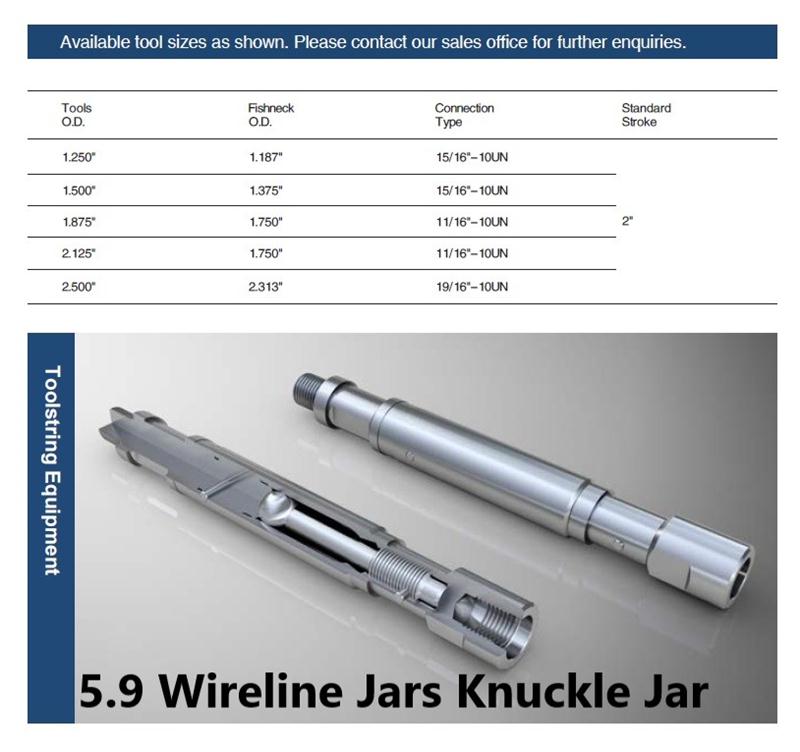Yantai Sanmon Machinery Equipments Co, Ltd
2022-03-16 12:09 BrowseTimes
- Mechanical Link Jar, also known as Spang Jar, utilises the weight of stems connected immediately above to deliver effective up and down stroke jarring impacts.
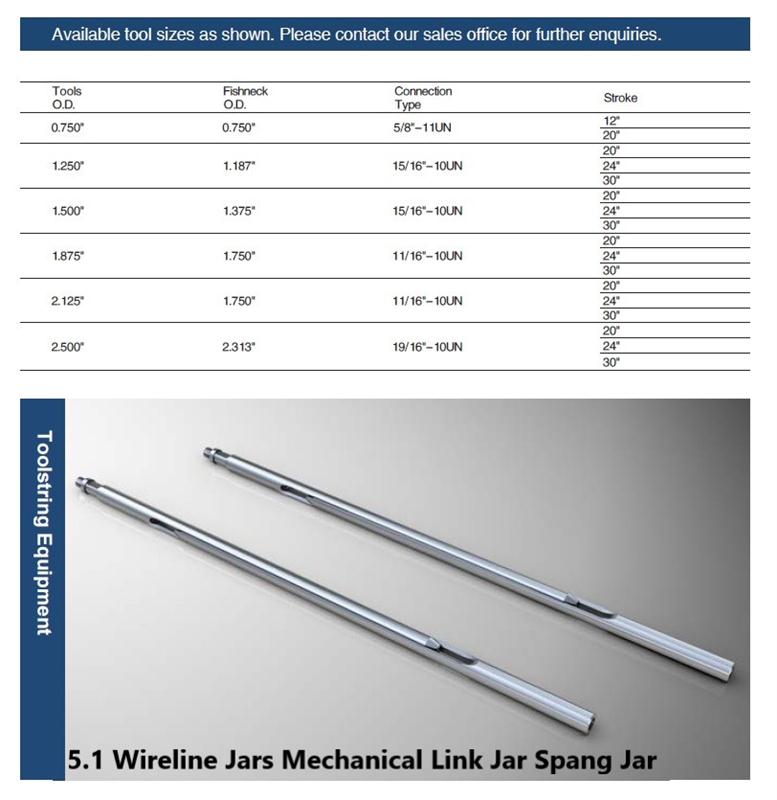
- Hydraulic Jar is a wireline tool serve for dependable upward jarring during wireline operations.
It is normally run above a set of Spang or Link Jars.
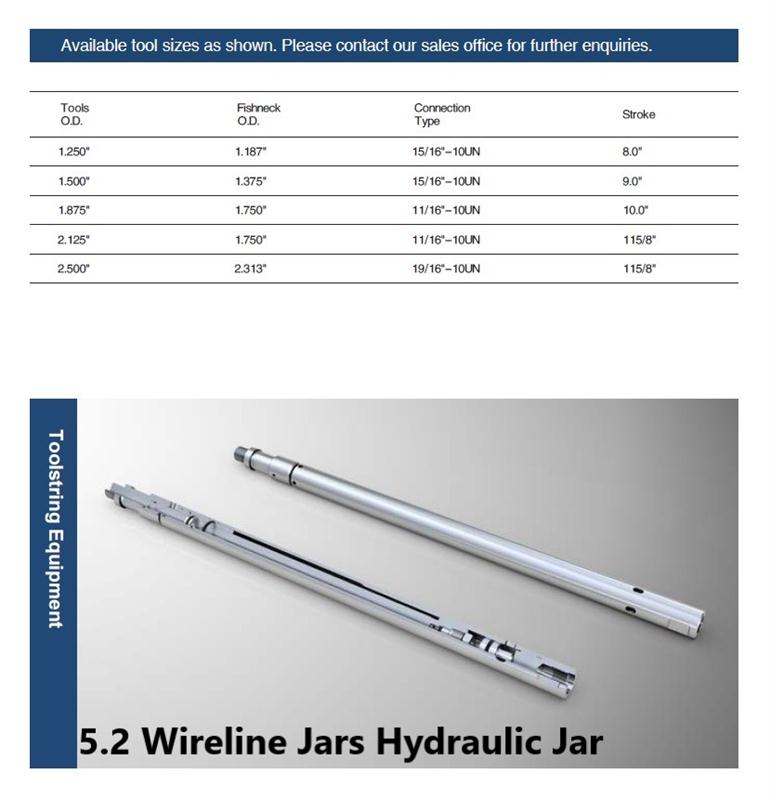
- The Spring Jar type 1, is a telescoping upstroke jar that should be run in conjunction with wireline stem installed immediately above. The Spring Jar can be adjusted on or off the toolstring at surface to a predetermined release force,therefore offering the operator a controlled impact force at the tool during heavy-duty wireline operations.
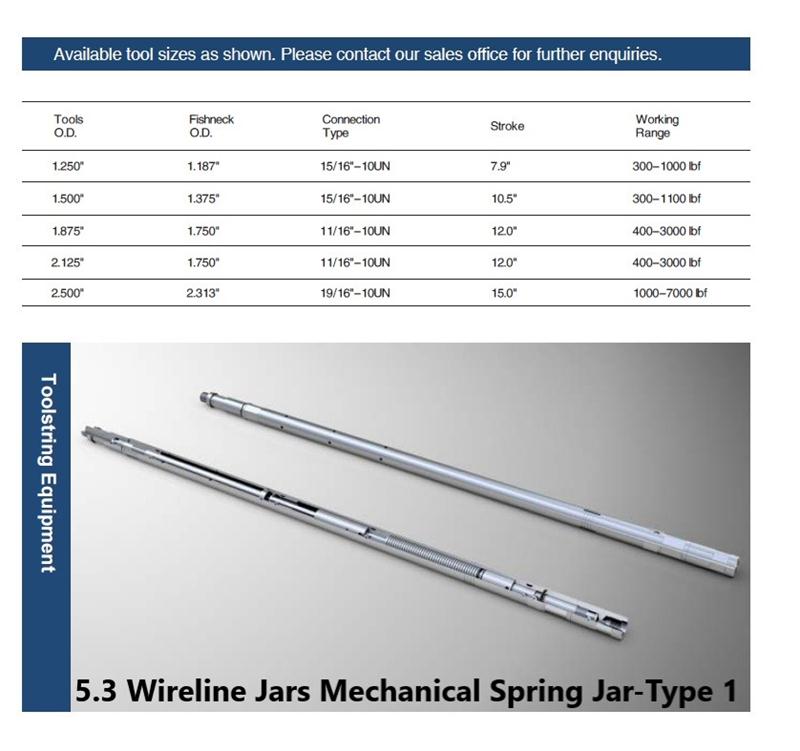
The Spring Jar operation has been designed using the minimum of working parts,which offers the operator a fast and simple redress should it
become necessary.
By utilizing the Calibration Tool the Jar values can be varied to suit operating conditions.
- Spring Jar Calibration Tool type 1; allows quick and simple setting of the release force of the Spring Jar.
The tool features a direct lead actuation plus accurate hydraulic load sensing.
The Calibration Tool makes up finger tight on the top sub of the spring jar.
The Tommy Bar is wound in and the jar latched.
As the Tommy Bar is wound out the jar rod is pulled and the jar is released.The release force is read directly on the hydraulic gauge in pounds.
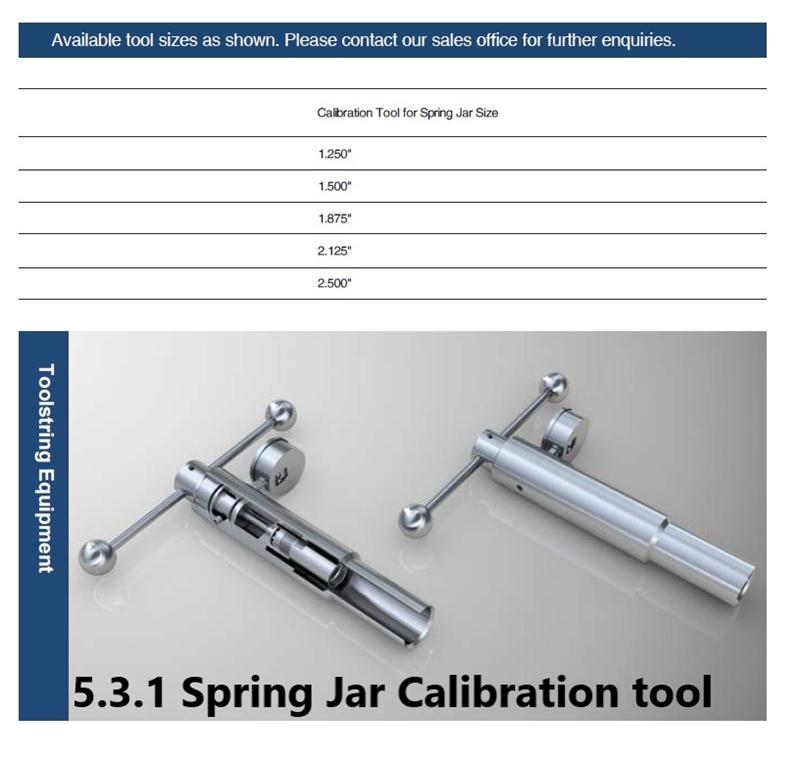
-Mechanical Spring Jar Type 2; is a tool used in the wireline work string to give upward jarring impact during heavy duty fishing operations.
The mechanical spring jar operates on the well proven "shifting key" latch principle which ensures trouble free operation with the minimum of maintenance.
This jar is supplied with a calibrated box spanner to give an indication of load settings and also a release tool for manually unloading the jar.
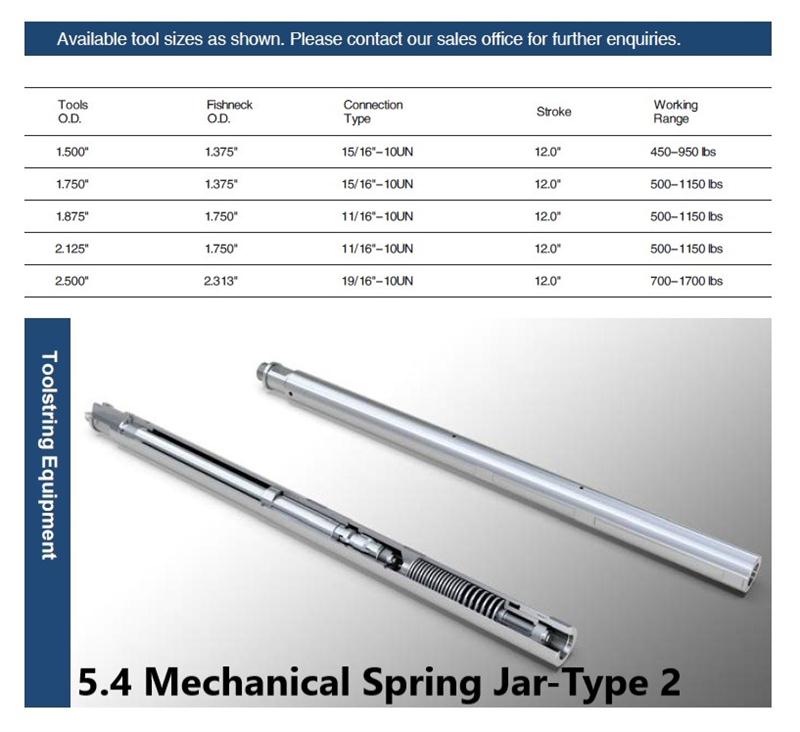
- Hydraulic Load Calibration Sub-Type 2; The mechanical spring jar is a tool used in the wireline work string to give upward jarring impact during heavy duty fishing operations.
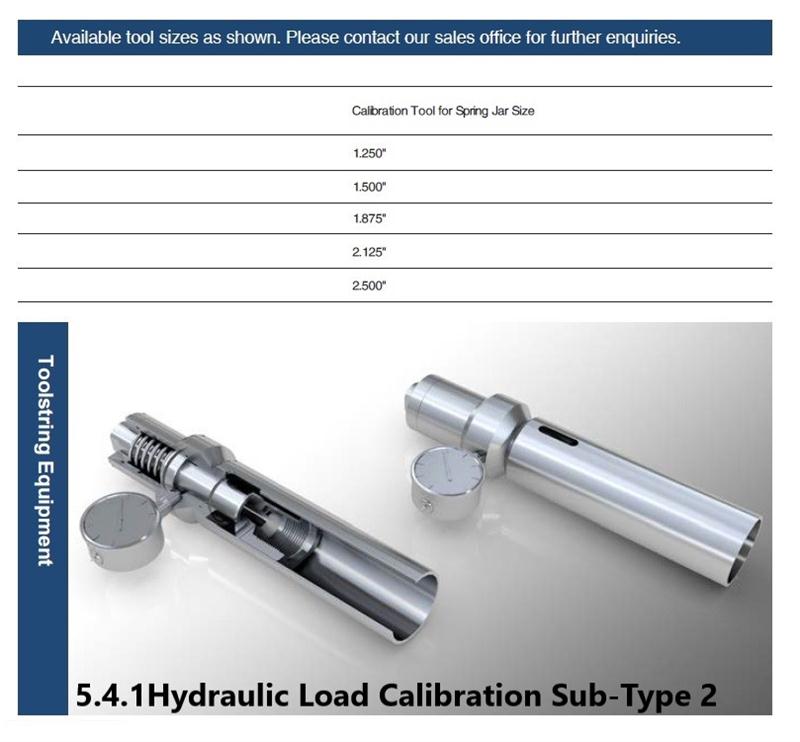
- Tubular Jar; is a telescopic jar that should be run in conjunction with the Wireline stem installed immediately above.
The body of the jar is perforated with drilled holes to minimize fluid resistance.
It is used mostly in connection with jarring debris and other foreign matter from casing and large tubing.
Jarring forces can be delivered in both upward and downward directions.
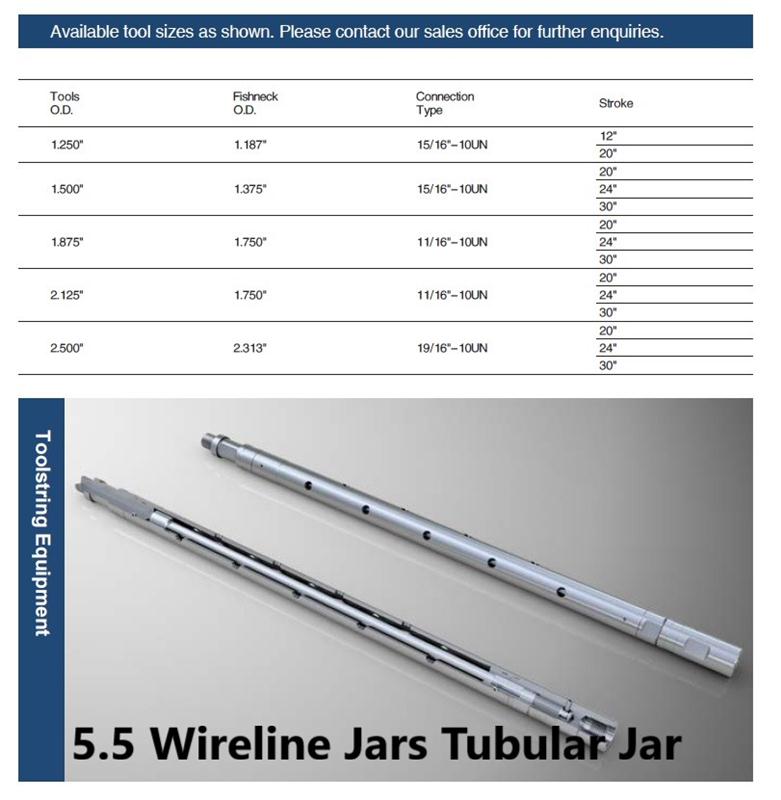
- Low Friction Jar, is ideally suited for use in deviated wells and is normally run in conjunction with roller stems which are installed immediately above.
Sliding bearings and a PTFE coated mandrel ensure a low friction action,thereby allowing full impact force from the roller stem above.
The tube body is also slotted to minimise friction and fluid resistance.
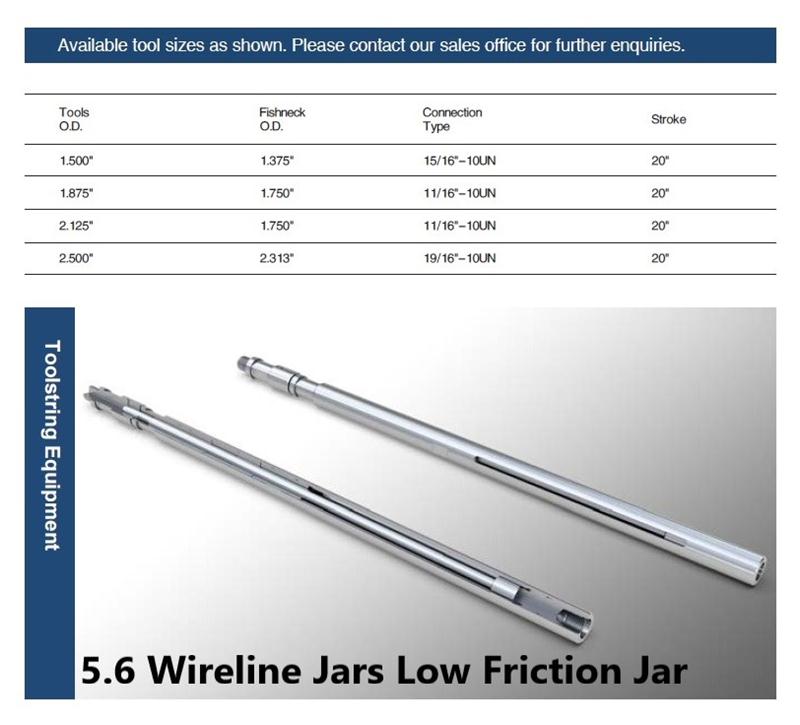
- Tubular Linear Jar, is a telescopic jar that should be run in conjunction with the Wireline stem installed immediately above.
The Linear bearing create a frictionless action,allowing full force of impact from the stem above.
The Tubular Linear Jar is the ideal tool for use in deviated wells.
This tool has a proven record of success in wells with 65-75 degrees deviation.
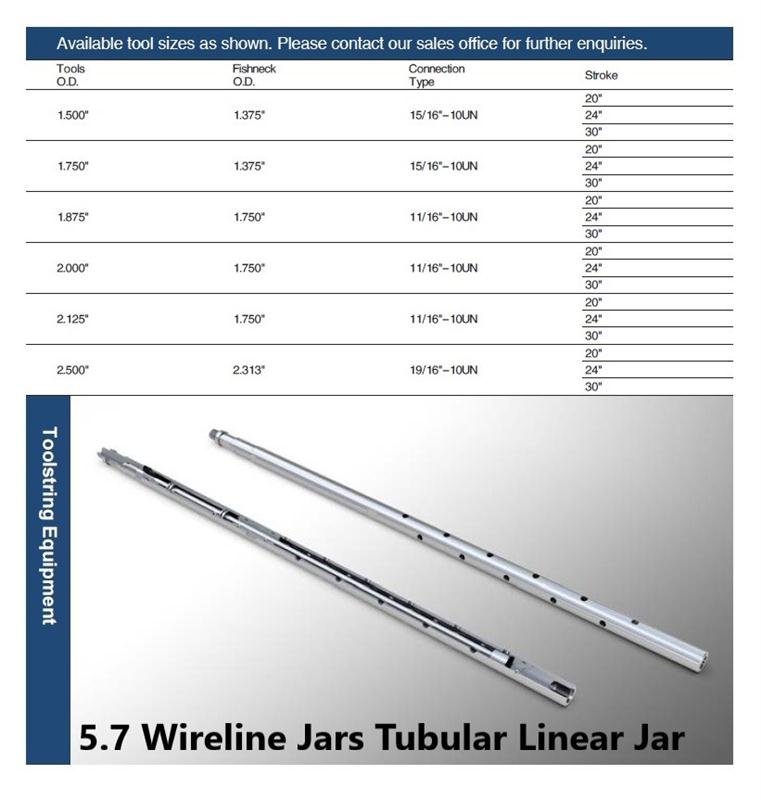
- Inverted Tubular Linear Jar, is a telescopic jar that should be run in conjunction with the Wireline stem installed immediately above.
The Linear bearing create a frictionless action,allowing full force of impact from the stem above.
The Tubular Linear Jar is the ideal tool for use in deviated wells.
This tool has a proven record of success in wells with 65-75 degrees deviation.
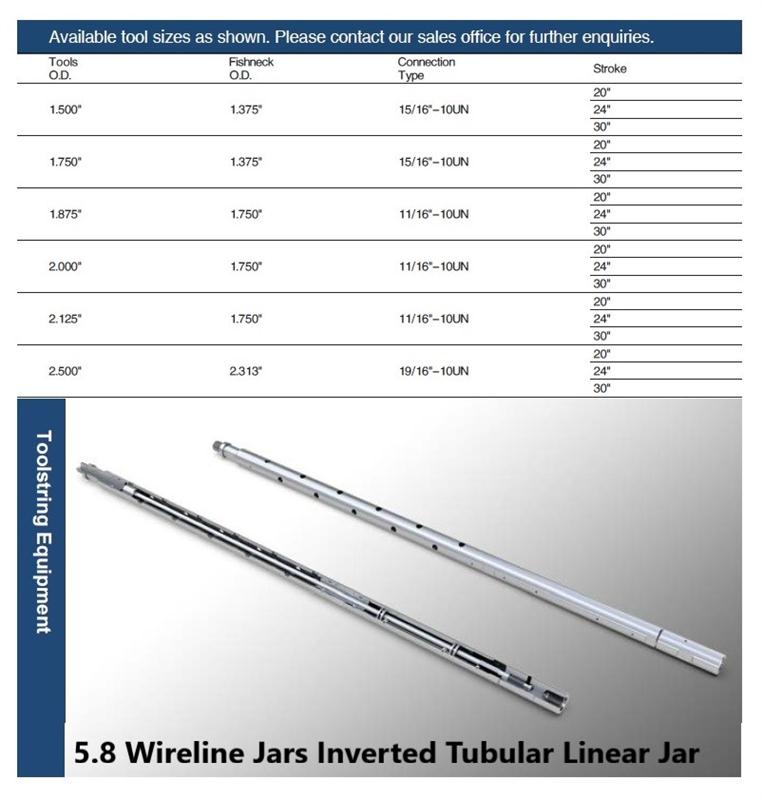
- Knuckle Jar is similar in construction to the Knuckle Joint.
The Knuckle Jar design incorporates a length extension of the socket that allows the ball to move vertically for light jarring.
